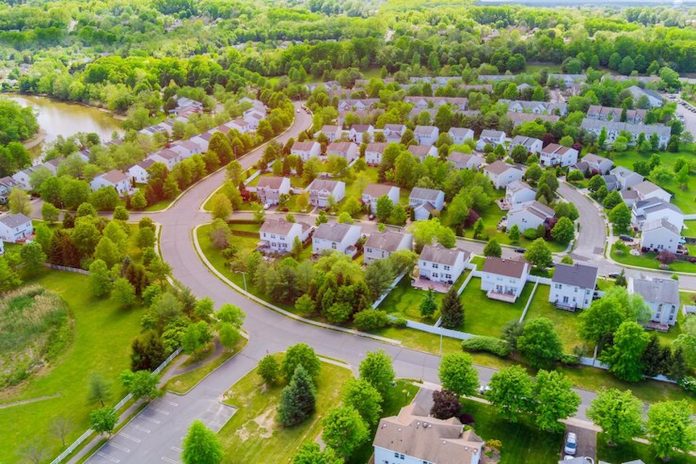As urbanisation expands, sustainable green infrastructure designs become increasingly urgent. Modern cities face climate change, pollution, and the urban heat island effect. Landscape design has to give eco-friendly solutions that improve urban life quality and promote environmental resilience as a top priority to solve these problems. This blog post delves into the principles of sustainable green infrastructure, exploring various strategies and best practices for integrating these concepts into urban landscape planning. Main Body
1. Understanding Green Infrastructure
Defining Green Infrastructure
Green infrastructure refers to a network of natural and semi-natural elements designed to manage water, reduce pollution, and create healthier urban environments. Unlike traditional infrastructure, which often relies on concrete and steel, green infrastructure utilises vegetation, soil, and other natural systems to deliver environmental, social, and economic benefits. For more information on landscape planning and green infrastructure, visit this page: https://artemis.uk.net/landscape-planning/.
Components of Green Infrastructure
Critical components of green infrastructure include green roofs, permeable pavements, urban forests, rain gardens, and bioswales. Each of these elements plays a crucial role in enhancing urban sustainability:
- Green Roofs: These roofs are covered with vegetation, which helps reduce the heat island effect, manage stormwater, and improve air quality.
- Permeable Pavements: Unlike conventional pavements, permeable pavements allow water to seep through, reducing runoff and recharging groundwater.
- Urban Forests: Trees and green spaces within cities provide shade, improve air quality, and enhance biodiversity.
- Rain Gardens: These are designed to capture and filter rainwater, reducing flooding and improving water quality.
- Bioswales: These landscape elements channel and filter stormwater, mitigating the impact of heavy rainfall.
2. Benefits of Sustainable Green Infrastructure
Environmental Benefits
Green infrastructure offers numerous environmental advantages, including:
- Reduced Urban Heat Island Effect: Vegetation cools the air through evapotranspiration and provides shade, lowering urban temperatures.
- Improved Air Quality: Plants absorb pollutants and produce oxygen, producing cleaner air.
- Enhanced Biodiversity: Green spaces provide habitats for various species, promoting biodiversity in urban areas.
- Water Management: Green infrastructure reduces stormwater runoff, improves water quality, and helps manage flood risks.
Economic Benefits
Investing in green infrastructure can lead to significant economic gains:
- Cost Savings: By reducing the need for extensive stormwater management systems, cities can save on infrastructure costs.
- Increased Property Values: Properties near green spaces and sustainable infrastructure often see higher market values.
- Job Creation: The design, installation, and maintenance of green infrastructure create new job opportunities.
Social Benefits
The integration of green infrastructure also enhances social well-being:
- Improved Public Health: Green spaces promote physical activity, reduce stress, and improve mental health.
- Community Engagement: Green infrastructure projects often involve local communities, fostering a sense of ownership and collaboration.
- Aesthetic and Recreational Value: Attractive green spaces enhance the visual appeal of urban areas and provide residents with recreational opportunities.
3. Strategies for Effective Landscape Planning
Incorporating Green Infrastructure into Urban Planning
To effectively integrate green infrastructure, urban planners must adopt a holistic approach:
- Strategic Placement: Identify key areas where green infrastructure can have the most significant impact, such as flood-prone zones or heat islands.
- Multi-functional Design: Ensure that green infrastructure elements serve multiple purposes, such as providing recreation space while managing stormwater.
- Connectivity: Create networks of green spaces that connect different parts of the city, enhancing ecological connectivity and accessibility.
Community Involvement and Education
Engaging the community is vital for the success of green infrastructure projects:
- Public Participation: Involve residents in the planning and decision-making to ensure that projects meet local needs and preferences.
- Educational Programs: Implement programs to educate the public about the benefits of green infrastructure and how they can contribute to its maintenance.
Policy and Funding Support
Effective landscape planning requires supportive policies and adequate funding:
- Regulations and Incentives: Develop policies that mandate or incentivise incorporating green infrastructure in new developments and renovations.
- Funding Mechanisms: To support green infrastructure projects and secure funding through public-private partnerships, grants, and other innovative financing models.
Conclusion
Sustainable green infrastructure designs are crucial for creating resilient, livable urban environments. Through thoughtful landscape planning, cities can mitigate environmental challenges, promote economic growth, and enhance social well-being. By understanding the principles of green infrastructure, embracing community involvement, and securing policy and funding support, urban planners can transform our cities into thriving, sustainable habitats.
The journey towards sustainable urban living is a collective effort that requires the collaboration of policymakers, designers, and the community. As we face the impacts of climate change and urbanisation, adopting green infrastructure will be pivotal in shaping a greener, healthier future for future generations. By prioritising green infrastructure in landscape planning, we can create urban spaces that meet today’s needs and ensure a sustainable legacy for the future.





























